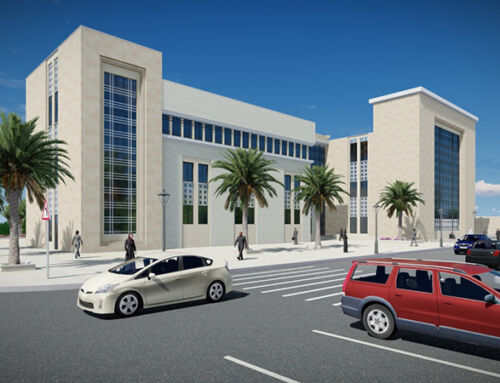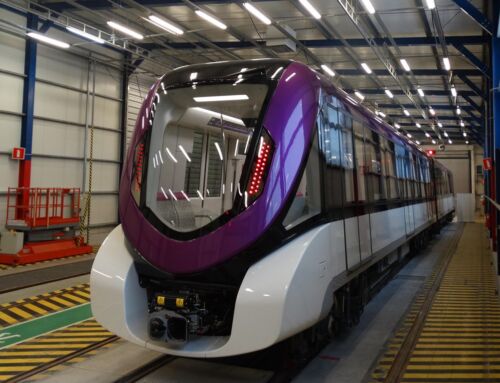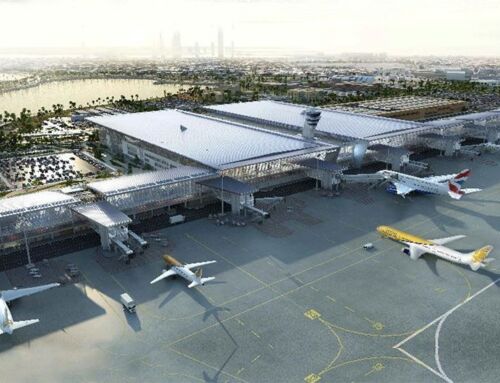Project: Muscat and Salalah International Airport Cargo Terminals
Location: Muscat and Salalah, Oman
Products: Air Terminals, Fans, Air Curtains, Truck Cooling Fans, Industrial Ceiling Fans
The Muscat International Airport is the largest airport in Oman situated 32 km (20 miles) from the old city of Muscat within the Muscat metropolitan area. The current airport covers 21 square kilometers (8.1 sq. mi.) and is the hub for the country’s national carrier Oman Air.
The Muscat Airport and neighboring Salalah Airport (Oman’s second largest) are currently undergoing a major expansion. The project, funded by the Oman Government and private investors, is designed to grow Oman’s aviation and logistics sector with the intention of providing additional revenue sources beyond oil and petrochemicals.
The Muscat Airport expansion includes a modern terminal and a new runway that can handle the new Airbus A380, a 101-meter (331 ft.) control tower, 32 aerobridges, a new cargo terminal to handle 200,000 tons of cargo annually and 6,000 additional parking spaces.
The new terminal, with a floor area of 290,000 sq. m (3.1 million sq. ft.) is going up between the two existing parallel runways. Once the new terminal is completed later this year work will begin on upgrading the existing terminal to handle larger aircraft.
The first phase of the new terminal expansion will increase capacity to 12 million passengers yearly. The final phase will expand capacity to 48 million passengers annually.
The Salalah project involves upgrading it from a primarily domestic airport making it more suitable for international travelers. The project includes the construction of a new runway to handle the A380 Airbus and a new terminal that will improve the airport’s capacity to one million passengers annually.
Energy International is involved with one portion of the project referred to as (MC12). This phase calls for the construction of Maintenance, Repair and Overhaul (MRO) facilities and cargo facilities for both Muscat and Salalah airports.
The Muscat airport cargo terminal will have the capacity for 260,000 tons annually with 19,000 square meters (204,541 sq. ft.) of temperature controlled space, and a 2,200 square-meter (23,680 sq. ft.) area dedicated for live animals.
The Muscat MRO complex is comprised of a combination of wide-body Code F hangars, a two-position Code C hangar, Ground Run-up Enclosure (GRE), technical shops, offices, central utility plant, various ancillary buildings, state of the art systems including aircraft wing and tail maintenance docks, overhead cranes, and AS/RS for parts storage.
The Salalah Airport cargo complex measures approximately 33,000 square meters (355,209 sq. ft.). The MRO facilities are approximately 11,000 square meters (118,403 sq. ft.) and include one hangar with support facilities.
Energy is working with contractor Joannou and Paraskevaides (J&P) supplying a number of components to the project including MetalAire Variable Air Valves (VAV), PennBarry fans, Mars air curtains, Patterson truck cooling fans and Skyblade STOL ceiling fans.
“We have a long-standing relationship with J&P, said Allie Bazzy, President, Energy International Corporation. “Energy provided J&P with a number of quotes when they were bidding on the project in the tender stage. When J&P was awarded the job, they came to us to supply the items.”
Long-time supplier-partner MetalAire supplied the TH-500 Series Variable Air Valves (VAVs). These units are built of zinc-coated steel with fiberglass insulation, damper control, electric heating elements (on selected line numbers), solid-state electronics and disconnect switches.
VAVs are installed in the HVAC ductwork and control the air flow and temperature to specific sections of a building keeping rooms at a constant and comfortable temperature.
The project called for a mix of fans for several applications. Large industrial blowers are the main supplier of air to the HVAC system while inline fans, installed inside the HVAC ductwork, move air throughout the building.
additional industrial fans are used to exhaust air from the structure. Special upblast fans will be installed over the live animal area of the cargo warehouse to assist in removing odors from that area of the building.
Another long-time supplier partner, Mars Air Systems, provided air curtains for the loading dock areas of both cargo terminals. The air curtains are mounted over the large loading dock doors providing a constant down flow of air to keep heat, dust and other particles from entering the cargo area when the doors are open.
The project called for a mix of Mars Model HV and EP curtains. The HP (High Velocity) models range in width from 96 to 120 inches to cover several cargo door widths and are designed for doors from 10 ft. to 12 ft. high. The six EP (Extra Power) units are 144” wide and designed for door heights from 14 ft. to 16 ft.
The Patterson Truck Cooling fans and Skyblade fans weren’t listed in Energy’s product portfolio, but contactors often rely on Energy to find the right manufacturers and products to meet their specifications.
A simple Google search and a list of specifications from the project schedule led Sales Engineer Salman Bukhari to Patterson Fan Co. in Blythewood, South Carolina.
“I referenced the consultant’s specifications with the specifications on Patterson’s web site,” said Bukhari. “I sent their specs to the consultant for his ok. When we got his ok, we had Patterson manufacture the units for the project.”


